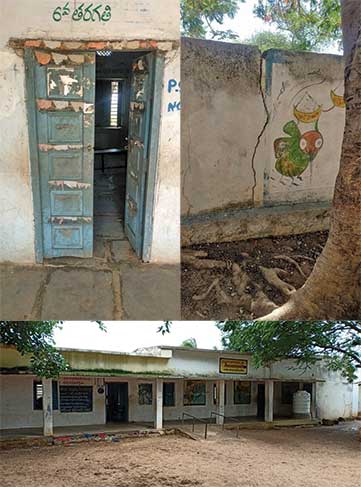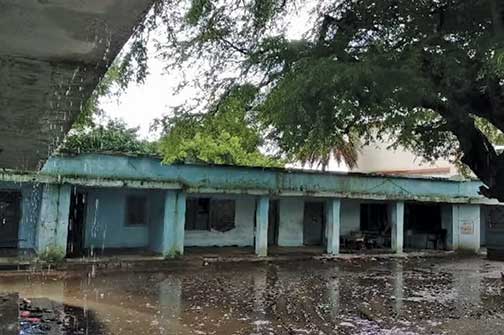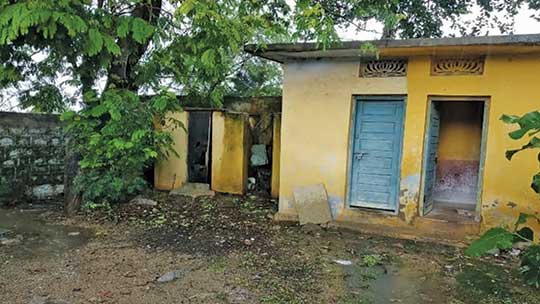Sushmita Aripirala
Have you ever paused to contemplate the diverse lenses through which we view schools, especially considering the varied experiences across different generations and socioeconomic backgrounds? Join me on a reflective journey, exploring not just the evolution of schools but also the complexities of changing expectations, aspirations, and dilemmas of parents and students.
Growing up, the corridors of my childhood echoed with stories about schools from my parents, stories that transcended generations and painted a vivid tapestry of our education legacy. These narratives often transported me back to an era where my grandparents traversed miles to reach the only government-run schools available. Education was a luxury, a pursuit for the privileged few, and professions were predominantly inherited, ranging from pundits, to barbers, to farming.
Fast forward to my parent’s time, and the dynamics shifted slightly. While the ritual of walking miles to school persisted, there was a noticeable shift in the perception of education. Schools were gaining prominence, and the importance of schooling, getting educated, and passing exams gradually gained momentum, particularly for the boy child. However, for the girl child, the exposure remained minimal, often truncated by early marriages.

The tide continued to turn when my generation entered the stage. My dad, to this day, reminisces about standing in seemingly endless queues for my sister’s admission to a private school. Yes, during our time, private schools, stepped into the limelight, presenting education in a more appealing package. They boasted better classrooms, experienced teachers, sprawling playgrounds, and affiliation to different boards. These institutions offered a diverse range of activities, including pottery, music, dance, and sports, providing a holistic approach to education. To top it all off, they presented stellar academic results – a compelling Unique Selling Proposition (USP) for parents. The promise of a better future for children led parents to endure long queues, offer payers, negotiate with staff, and sometimes resort to less conventional methods, like bribing, to secure the child’s admission.
Over the years, the educational landscape underwent further transformation. From government schools being the sole providers of education, private schools emerged as game-changers. Subsequently, the era of international schools dawned, adding a touch of global appeal to education. I vividly recall classmates animatedly discussing the sprawling campuses and exorbitant fees of the first international school in my city. This marked the beginning of the international schools’ era, a phenomenon that has grown stronger over years.
Today, as I observe the educational choices made by parents from the middle and upper-middle classes, a distinct pattern emerges. There is an overwhelming desire to enrol children in international schools. This inclination, I believe stems from two primary reasons. Firstly, parents are attracted by the top-notch infrastructure, state-of-the-art facilities, and the wish to see their children amidst sprawling campuses – a sign that did not exist in their time. Secondly, and more subtly, many of these schools have become status symbols. It’s an uncomfortable truth, but the reality is that the names of these schools are often wielded as indicators of financial prowess. A quick inquiry about the child’s school often inadvertently becomes a financial audit, with the annual fees serving as a barometer of the family’s economic standing. It’s a paradoxical situation where the pursuit of elite becomes not just about the academics but also about the societal status.

In stark contrast, my journey into the government schools began a decade ago when I actively engaged with students, staff, and parents. Immersed in this experience, I sought to understand their concerns and the factors driving their choices. What emerged was a surprising trend – the allure of the term “private”. Despite the lack of discernible differences in the quality of education, parents gravitated towards low-income private schools. The mere association with the term “private” held an inexplicable appeal.
During one conversation, I probed a domestic help about why she chose a private school over a government one. Her response resonates in my ears to this day: “Only those who have no money or work send their children to a government school. I work very hard alongside my husband, so why would I send my child to a government school?” This sentiment, shared by many from similar economic backgrounds, reflects a prevailing belief that private schools, irrespective of the quality of education, are inherently superior.
Moreover, economic considerations have funded a significant migration of families from rural areas to cities in pursuit of better wages. This shift has transformed the educational aspirations of these families. They no longer wish for their children to endure the same struggles they faced; instead, they seek to provide them with better educational opportunities. For these families, better education translates to enrolling their children in local private schools. However, even in this scenario, the gender bias persists. Boys are often sent to low-income private schools with the expectation that they will receive an education, eventually supporting the family financially. In contrast, regardless of a girl’s academics prowess, she is relegated to government schools as parents are reluctant to invest in her education, anticipating that she will be married off and leave the family.

While the magic of private schools has permeated all sections of society, there remains an unsettling reality for government schools. Despite the commendable efforts of NGOs and corporate initiatives directing CSR funds towards improving government schools’ standards, the impact is superficial. The infrastructure is often outdated, the recruitment of new teachers is a rarity, training programs for existing teachers are scarce, and basic facilities such as clean bathrooms and satisfactory mid-day meals are far from guaranteed. Throughout my journey, I encountered principled school leaders eager to bring about positive changes but hampered by financial constraints and a lack of guidance.
In conclusion, as times have changed, schools have evolved, reflecting the shifting sands of our societal fabric. While private schools flourish, government schools struggle to find their footing, trapped in a cycle of neglect. It is unfortunate that, except for international schools and a select few others, the financial sustainability of most, including government, low-income private, and rural centers, remains precarious.
In contemplating the conundrum of choice, the question arises – what should parents seek in their children’s education? Is the allure of facilities offered by elite schools or the quality of education that serves as the bedrock of academic and personal development? Perhaps, the answer lies in finding a delicate balance, an equilibrium that embraces both facts. Yet, as a parent navigating these diverse worlds, the quest for ideal learning space for my toddler remains a complex journey, one that is layered with the perpetual debate of hangout spaces and networking hubs versus life skills and emotional balance. It’s a dilemma that reverberates through the hearts of parents, adding another layer of complexity to the already intricate landscape of education.
The author has moved on from working as a senior system architect to a passionate advocate for educational and social initiatives. Today, she wholeheartedly engages with low-income private schools and government institutions, championing equitable education and community development. She can be reached at sushmita.aripirala@gmail.com.
